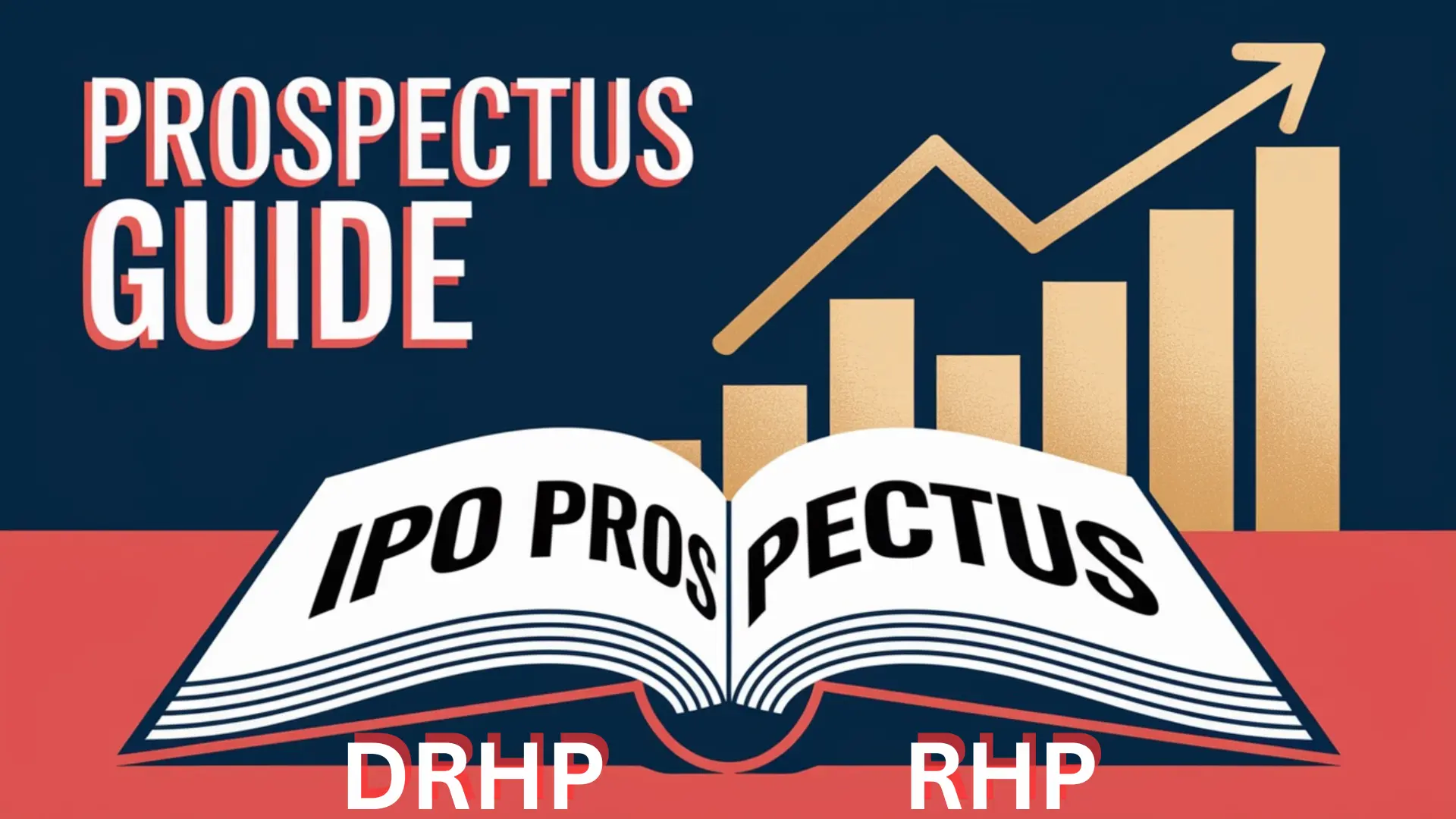Table of Contents
- What is an IPO Prospectus?
- Meaning of IPO Prospectus
- Types of IPO Prospectuses
- Essential Sections in an IPO Prospectus
- DRHP vs RHP – Key Differences
- RHP vs Shelf Prospectus (for NCDs)
- Final Thoughts
What is an IPO Prospectus?
An IPO prospectus is a formal legal document shared by companies during their Initial Public Offering (IPO) process. It provides potential investors with essential details about the company, enabling them to make informed investment decisions.
In India, companies must first submit a Draft Red Herring Prospectus (DRHP) to SEBI when planning to go public. Once approved, they file the Red Herring Prospectus (RHP). These documents must adhere strictly to SEBI’s regulatory framework.
Meaning of IPO Prospectus
An IPO prospectus acts as a detailed informational invitation rather than a binding agreement. It’s issued by the company and lead managers to educate the public on the IPO, including company background, financials, risks, and offer specifics.
Types of IPO Prospectuses
Draft Red Herring Prospectus (DRHP)
- A DRHP is the preliminary version of the offer document submitted to SEBI or the stock exchange.
- It includes vital info: business summary, IPO structure, promoter and shareholder details, risk factors, financial data, and the purpose of the funds raised.
- The exact issue size, share price, and number of shares are missing from the DRHP.
- Public Feedback: DRHP is published on SEBI, exchange, and merchant banker websites for public comments.
- SEBI Review: Observations must be addressed within 12 months.
2. Red Herring Prospectus (RHP)
- Once SEBI approves the DRHP, the issuer files the RHP, which contains updated information, financials, and any changes.
- Unlike DRHP, the RHP includes confirmed data except the final pricing or number of shares in a book-building issue.
3. Final IPO Prospectus
- This version contains the final price, total shares offered, and net proceeds.
- Registered either before (fixed-price IPO) or after (book-building IPO) the issue opening/closing with the Registrar of Companies.
4. Abridged Prospectus
- A summarized version of the full prospectus, it accompanies the IPO application form.
- Includes key details: promoter info, pricing, deadlines, company summary, business model, risk factors, and financial highlights.
Essential Sections in an IPO Prospectus
- Glossary of Terms
- Offer Summary
- Risk Factors
- Introduction & Financial Overview
- Offer Structure
- Objects of the Issue
- Basis of Pricing
- Company Overview
- Industry Analysis
- Business Model & Strategy
- Board & Management
- Promoter & Promoter Group Info
- Group Companies/Subsidiaries
- Legal Disclosures
- IPO Process & Timelines
- Articles of Association Overview
- Material Contracts
- Management Certification
DRHP vs RHP – Key Differences
| Criteria | DRHP | RHP |
|---|---|---|
| Purpose | Draft to seek SEBI feedback | Finalized version with updates |
| Details Included | Business, risks, structure, management | Includes all DRHP info plus financial updates |
| IPO Stage | Before SEBI approval | After approval and before final pricing |
| Use | Mandatory for all IPOs | Required for book-built IPOs only |
RHP vs Shelf Prospectus (For Bonds like NCDs)
| Criteria | Red Herring Prospectus | Shelf Prospectus |
|---|---|---|
| Applicability | For IPOs and FPOs | For debt/bond offerings like NCDs |
| Filing | Required each time for equity offerings | One-time filing for multiple bond issues |
| Approval | SEBI & ROC | SEBI |
Final Thoughts
The IPO prospectus is more than just a regulatory document—it's a crucial resource that empowers investors to make informed decisions during the Initial Public Offering process. Understanding the differences between the Draft Red Herring Prospectus (DRHP), Red Herring Prospectus (RHP), and the Final Prospectus can help you assess a company's fundamentals, business model, financial health, and associated risks.
For companies, a well-crafted prospectus builds transparency, trust, and credibility in the public market. For investors, it serves as a detailed guide to evaluate whether the IPO aligns with their financial goals and risk appetite.
Whether you're a retail investor, institutional buyer, or someone exploring IPO investment opportunities in India, reading and analyzing the IPO prospectus should always be a top priority. It’s the foundation of smart, responsible investing in the capital markets.

